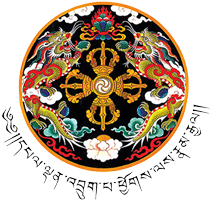Kishuthara- Vibrant Colored Silk Kira
Khoma Village, located approximately 10 km from Lhuentse Dzong, is renowned for its production of Kishuthara, an intricately patterned silk textile woven primarily by the village’s women.
Kishuthara, a highly coveted type of kira (traditional dress for Bhutanese women), is known for its elaborate designs. During the winter months, when farming activities slow down, the women of Khoma dedicate their time to weaving, preserving this ancient craft.
Visitors to Khoma can often see women sitting in rows of makeshift textile cottages, meticulously weaving Kishuthara. Women in neighboring gewogs like Minjey, Menbi, and Tsenkhar also contribute to the production of these exquisite textiles. The primary material used is brocade, which is readily available in retail markets. However, Kishuthara is known for being expensive, reflecting the significant time, effort, and craftsmanship involved. The most intricate pieces can take up to a year to complete due to the complexity of their designs, with prices varying based on the intricacy and the quality of the brocades used.
In recent years, many weavers have started using natural dyes on the silk threads, a practice that has revived traditional dyeing techniques. Natural dyes are derived from plants, minerals, and other organic sources, producing a range of beautiful, earthy tones. The process of dyeing the white silk threads naturally is labor-intensive but results in vibrant, long-lasting colors that are highly sought after. These naturally dyed Kishuthara pieces command much higher prices compared to those made with chemically dyed silk threads, further enhancing the value of the textiles. Natural dyes also offer an eco-friendly alternative, making them more attractive in both domestic and international markets.
Girls as young as eight are taught the art of weaving, beginning with simple Kishuthara patterns before progressing to more complex designs over time.
Kishuthara remains one of the most cherished garments for Bhutanese women, especially during festive occasions such as Tshechus and Wangs. Beyond its cultural significance, Kishuthara weaving has become an important source of supplementary income for many households, especially during the off-season in winter. The shift toward natural dyeing also adds an eco-conscious dimension to this traditional craft, further increasing its market appeal.
Contact us
- Dzongkhag Administration Lhuentse, Bhutan
- HRO@04545136
- PA to Dzongdag@04545101
- Email(PA)@tchoki@lhuentse.gov.bt
